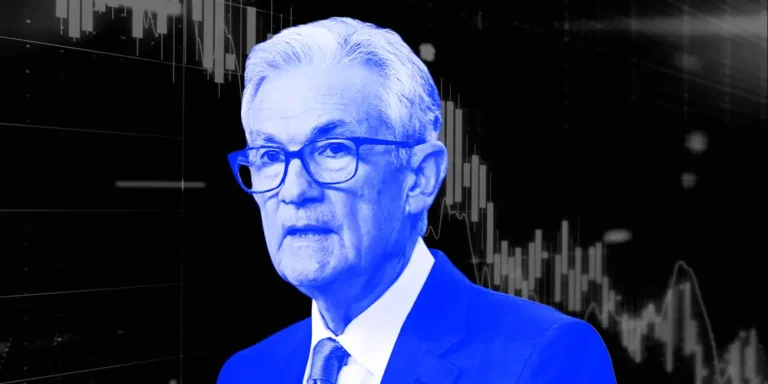A top-1% fund manager over the past 5 years shares his strategy for finding mispriced assets to earn income with less volatility — and the 5 top places he’s investing now

- Fidelity’s Adam Kramer has overseen one of the top multi-asset income funds of the past five years.
- By sticking to his strategy, Kramer is able to achieve stock-like returns with less volatility.
- Here are five asset classes he’s targeting right now in this uncertain environment.
Adam Kramer, the fund manager, has discovered the ideal investment balance.
The 23-year Fidelity Investments veteran and co-manager of its Multi-Asset Income Fund (FMSDX) has devised a strategy that secures the robust returns that stocks are known for while also providing the consistency and safety that fixed income provides.
His outcomes speak for themselves. According to Morningstar, Kramer’s income-focused fund has had an average annual return of 9.2% over the last five years, outperforming its category’s average of 3.6% and placing it in the top 1% of funds over that time period.
Since its inception in 2015, the fund has outperformed in six of the seven full years — not including 2023, when it is outperforming 92% of its peers.
How to maximize returns while minimizing risk
Aside from its excellent risk-adjusted returns, what distinguishes the Fidelity Multi-Asset Income Fund is how Kramer and his co-managers, Ford O’Neil and Ramona Persaud, select investments.
Each member of the trio specializes in a different area, so when they get together, they bring new perspectives on where the best opportunities are in the equity and fixed income markets.
Kramer and his colleagues, as managers of a so-called moderately conservative allocation fund, can target a wide range of assets but must maintain a risk profile similar to that of a traditional 50-50 fund. Kramer said the fund invests 30% to 60% of its assets in stocks and the rest in bonds, and that its benchmark is evenly split between the two asset classes.
The fund’s composition is weighted toward whatever asset classes are being overpriced by the market at the time. Though asset classes seesaw from leading to lagging, Kramer believes the gyrations are not random. By determining where the best opportunities exist, his team can invest accordingly and consistently outperform their index.
“We’re basically just trying to find areas in the market that are mispriced,” Kramer explained to Insider in a recent interview. “And it can range from stocks to high-yield bonds, corporate debt, convertible bonds, preferred stocks, and even Treasuries.” So we’re looking for areas where there’s too much bad news priced in while still getting a high yield.”
“By having the flexibility to invest across the full spectrum of income-oriented asset classes, we realized that the market has a tendency to misprice interest rate risk, credit risk, and earnings risk — year in and year out,” he added later.
Identifying undervalued asset classes and top investments within them enables Kramer to unlock “premium yield,” which boosts returns. While traditional stocks and bonds receive the majority of investor attention, the fund manager claims they do not always produce the best returns.
“For the majority of the last 25 years, something other than investment-grade bonds and S&P 500 stocks has been the best performing asset class,” Kramer said. “And that’s what we’re trying to capture.”
The ability of the Fidelity Multi-Asset Income Fund to protect against losses and hedge against volatility is also appealing. The fund can outperform in both bull and bear markets because Kramer and his team can better match income to risk than competing multi-asset funds, as evidenced by higher upside and downside capture rates. “What I’m trying to do is get an equity-like return but really have something as close to zero as we can on that downside scenario,” Kramer explained.
5 top assets to target now
To keep up with its benchmark, the Fidelity Multi-Asset Income Fund has significant holdings in three of the S&P 500’s top stocks: Microsoft (MSFT), Apple (AAPL), and Amazon (AMZN). While Kramer did not name those companies, he did say that his fund’s exposure to large-cap US stocks has boosted its performance in what has been a technology-driven market rally this year.
Kramer also likes preferred stock because, unlike large-cap tech firms, they have priced in a lot of bad news about duration risk.Kramer has specialized in preferred stock, which differs from common stock in that it pays higher dividends at the expense of full voting rights, for more than a decade. The fund manager said he has increased his allocation to preferred stock of large money center banks in recent years.
Convertible bonds, which are coupons that can be converted into equity, are another asset class that Kramer has long studied and believes in. Kramer noted that some convertibles traded at 30% to 40% discounts last year as investors fled long-duration assets as interest rates rose.
Convertible bonds have recovered dramatically this year and are the best-performing fixed-income asset class, according to Kramer. What he called his fund’s “secret sauce” has grown in popularity as markets recognize that going concern risks may be exaggerated.
Investment-grade bonds make up nearly 38% of Kramer’s portfolio as of June 30. US Treasuries account for 22.5% of the fund’s assets, while non-junk corporate bonds account for 14.5%. Though not particularly exciting, the asset class is worth owning for protection.
“If the economy were to slow at this point, you could say that’s an area where investment-grade bonds could benefit,” Kramer said.
Finally, Kramer’s income-oriented fund owns bonds of all maturities. As of the end of Q2, its duration distribution page demonstrates ample diversification across short-, medium-, and long-term bonds.*As a Fidelity representative pointed out after publication, cash and equities make up 35% of the fund’s assets with a duration of less than 10 days. This shift has been reflected in the story.
In 2022, the fund manager stated that he went underweight long-term bonds due to his belief that markets were overly optimistic about inflation. His concern that interest rates would rise faster than expected, crushing longer-dated bonds, proved correct. But, according to Kramer, there is now a lot of pessimism about inflation and interest rates, which could boost long-term bonds. Instead of predicting what will happen with interest rates or the economy, Kramer said he’s diversifying across duration — and asset classes in general — to improve his chances of success.





